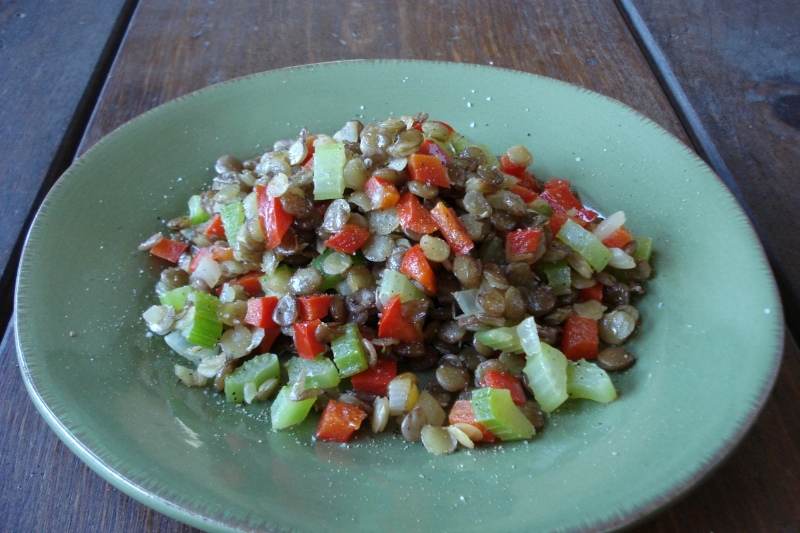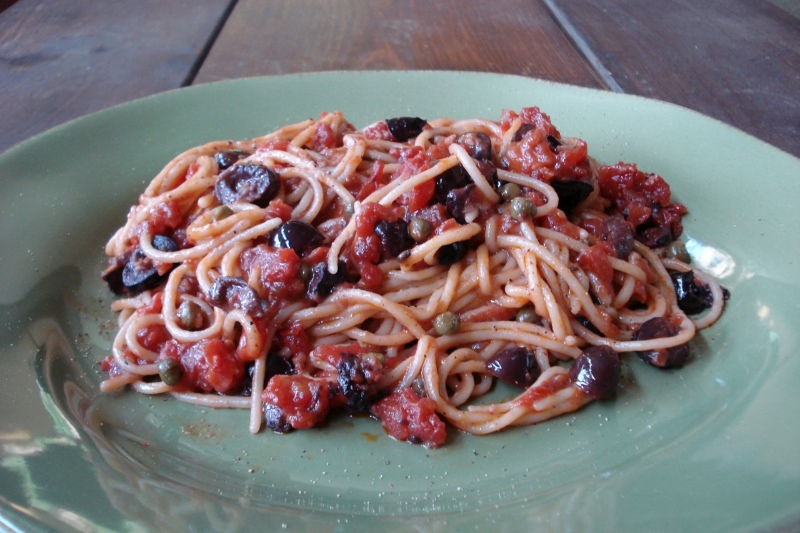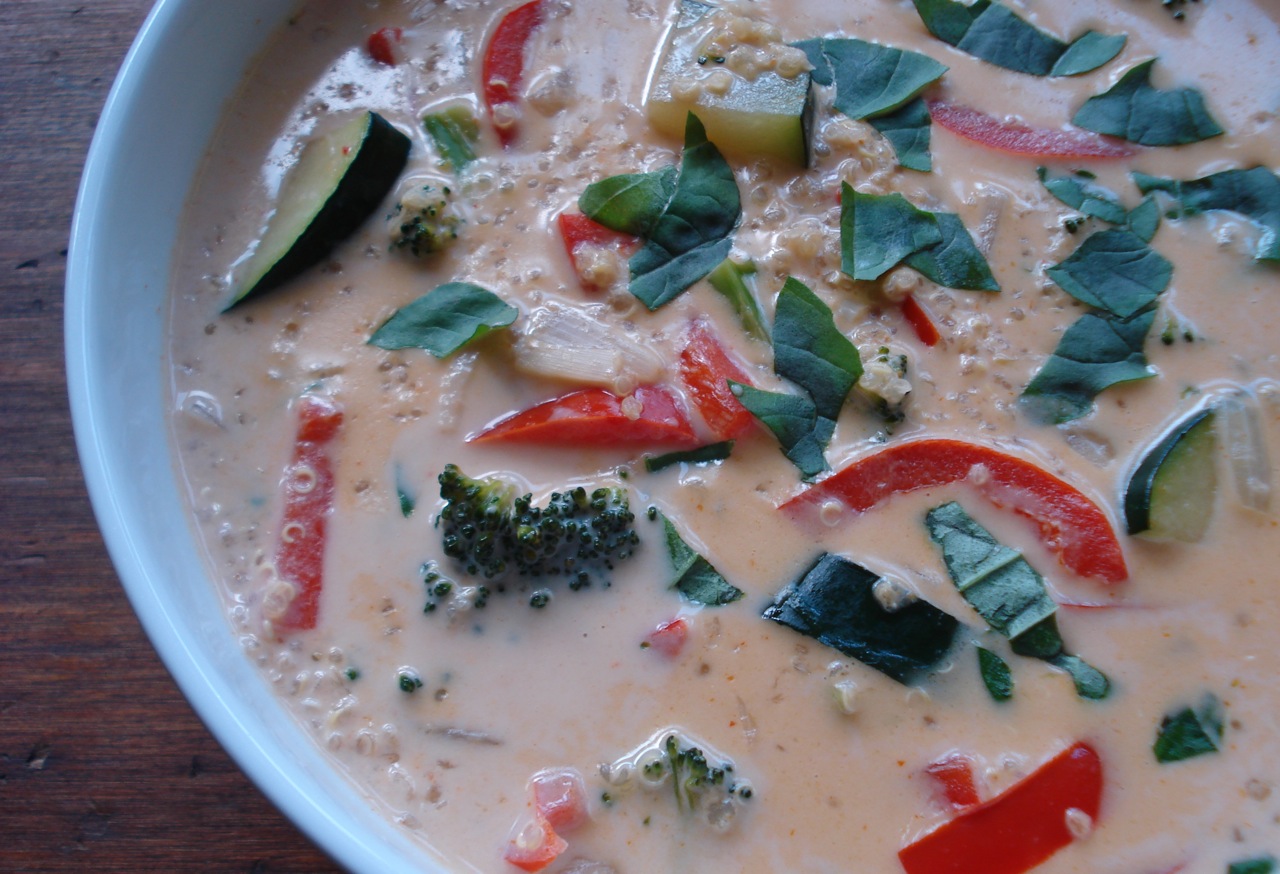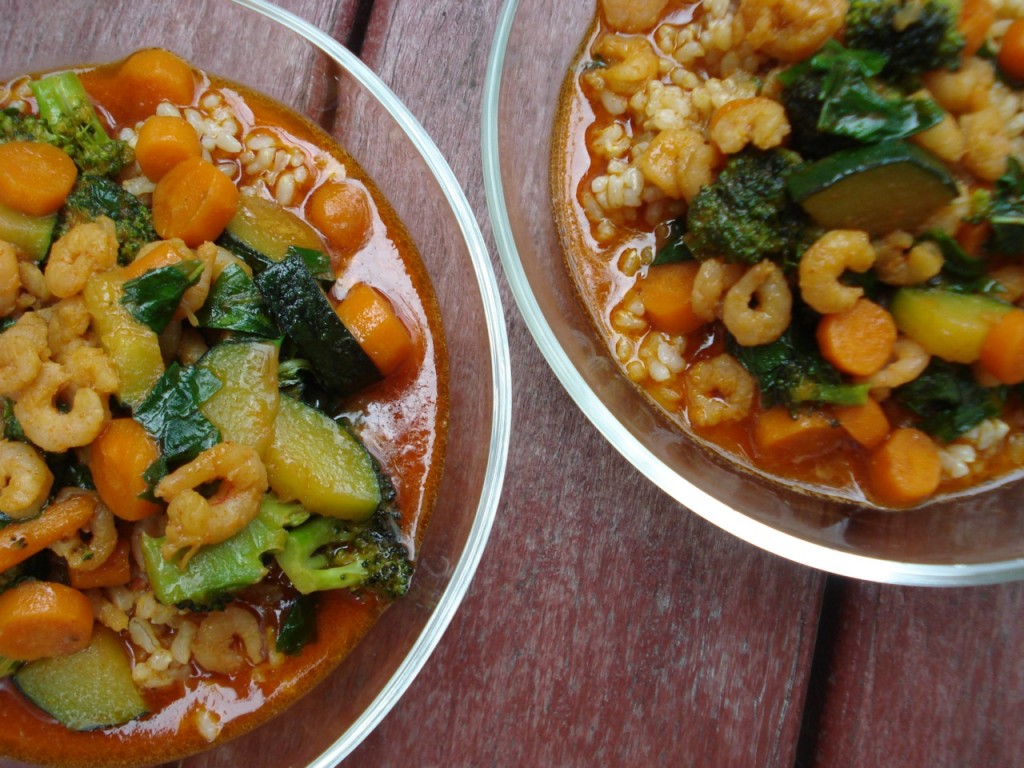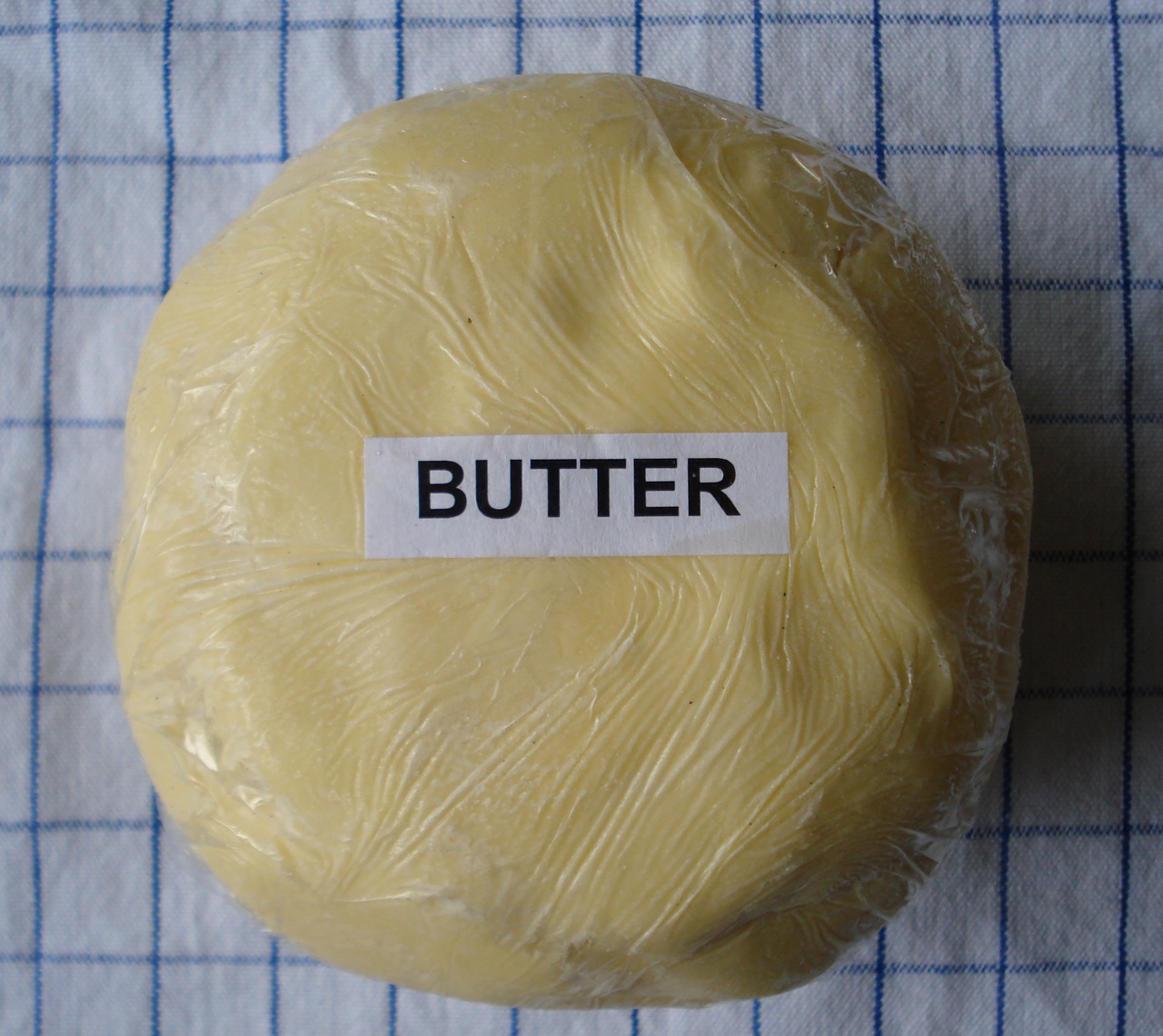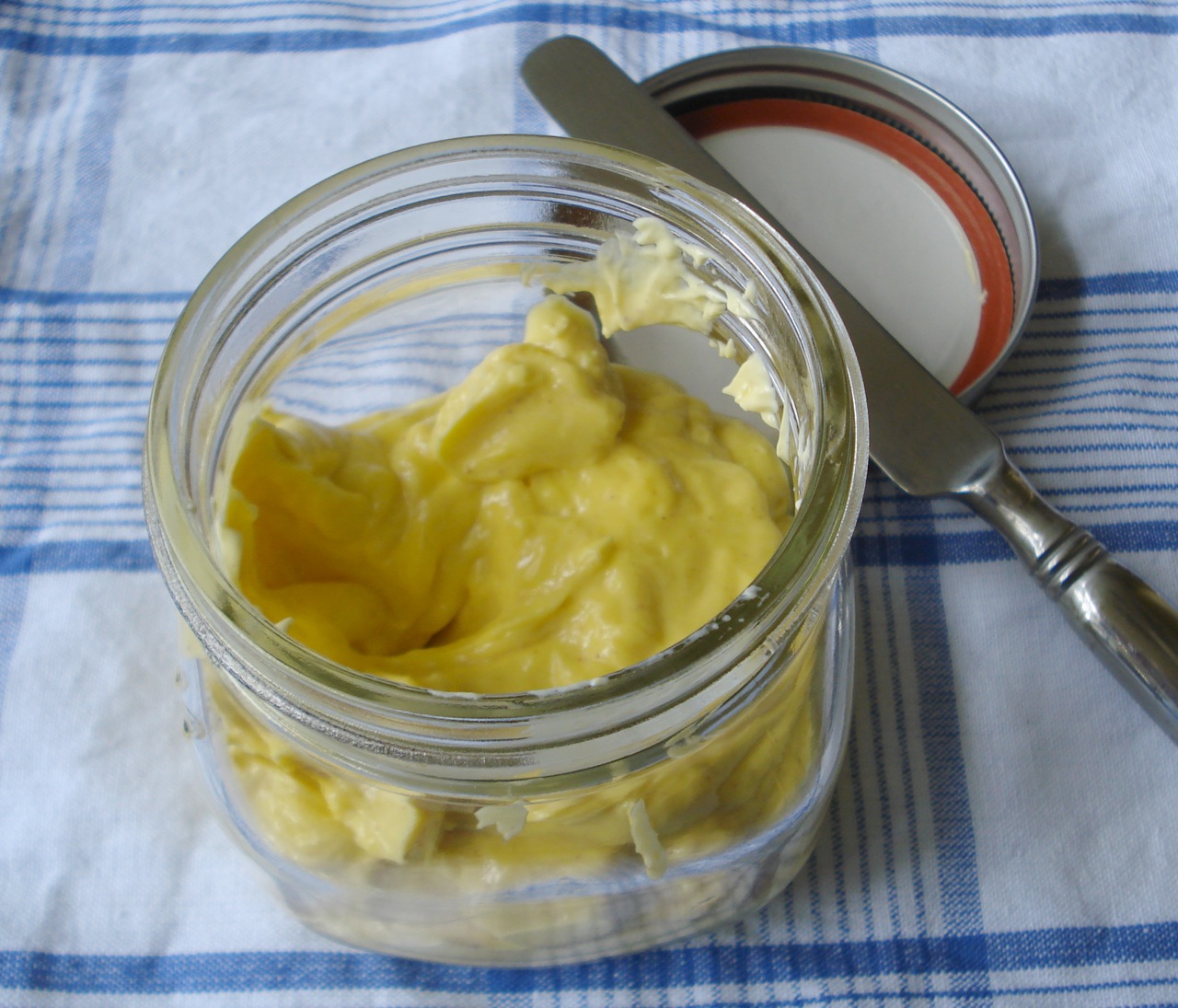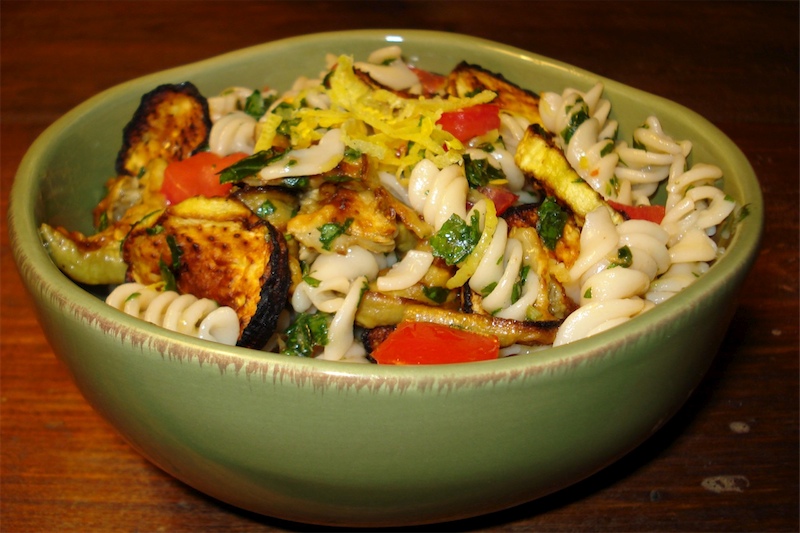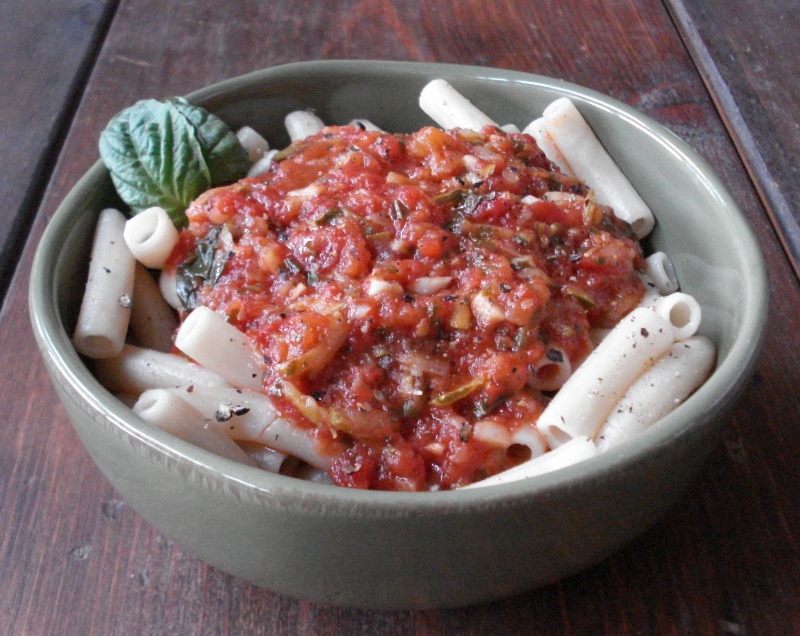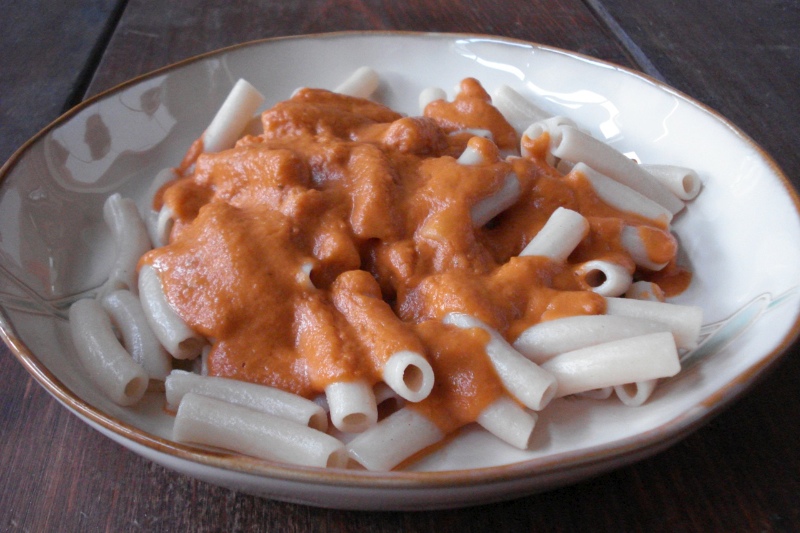Buttery Lentils & Veggies
2 TBSP butter, ghee, or coconut oil
1/2 cup onions, diced
1 cup green or brown lentils* (sprouted if possible or soaked overnight) (see notes below)
1/2 cup celery, diced
1/2 cup red bell pepper, diced
pure salt & pepper to taste
- Melt butter or oil in medium skillet over low heat.
- Add onions and cook a few minutes until softened.
- Stir in lentils, celery & peppers & cover.
- Simmer approx 5 mins or until veggies and lentils are tender.
- Season with salt & pepper to taste.
______________________________________________________________________________________
SIDE NOTES:
~ Very basic, easy dish, where the natural flavors of the foods really shine through. Add a simple grain dish on the side & you’ve got a meal.
~ Beans, grains, nuts & seeds are more digestible and nutritious in their sprouted state. If you don’t want to soak/sprout yourself, look for “truRoots” sprouted green lentils at your local health food store (in a yellow bag). Cook as directed on back of package (only takes 7 minutes), then add to this recipe as stated. Or – soak regular dry lentils in water overnight (measure after soaked & drained) & add to recipe as stated. Or – simmer dry lentils in water for 30 – 60 minutes until tender & add to recipe as stated. And just so you know, to sprout something, you don’t necessarily need it to grow a tail. You just have to soak it for a specific amount of time (dependant upon what you’re soaking). For instance, if you soak raw almonds for 7 or 8 hours, you’ve got sprouted almonds. You could keep going w/ the rinsing & soaking for a few days until they grow a tail, but none the less, tail or no tail, after 7 hours, you’ve got sprouted almonds. Will write a separate post on this at some point for those who are interested.
~ Butter is one of those things you really want to buy organic. Whether we’re talking about a person, a cow, or any other animal, when toxic substances (pesticides, medications, food colorings & other chemicals….) are present in quantities too high for the liver to eliminate, they get stored in fat cells. Butter is almost pure fat, so if you’re eating non-organic butter, whatever chemicals that cow was loaded up with will be present in high concentration in the butter. Raw, organic butter from grass fed cows is best, but a good quality store brand, pretty easy to find is Organic Valley. I like their European Style Cultured Butter or Pasteured Butter. 2 out of 3 ain’t bad.
Dairy Free, Gluten Free, Egg Free, Nut Free, Sugar Free, Grain Free, Vegan, If eating dairy free, use coconut oil instead of butter.Raw
Spaghetti w/ Tomatoes, Olives & Capers
3 TBSP extra virgin olive oil
3 medium garlic cloves, minced or crushed
1/2 tsp crushed red pepper flakes
28 oz package whole plum tomatoes, drained & chopped
1/2 cup good quality black and/or green olives, pitted & chopped
1 TBSP drained capers, rinsed
1/2 tsp pure salt
1 pound whole grain spaghetti
- Saute garlic & red pepper flakes in the oil over medium heat until the garlic is golden, about 2 mins.
- Add the tomatoes, olives & capers.
- Simmer over medium-low heat, stirring occasionally, until the tomatoes soften & the sauce thickens, about 15 mins.
- Add salt.
- Cook pasta until al dente & drain.
- Toss spaghetti w/ sauce & serve.
______________________________________________________________________________________
SIDE NOTES:
~ From “The Complete Italian Vegetarian Cookbook.”
~ I use a slotted spoon to scoop the tomatoes into a bowl for chopping. Some of the juice from the can ends up in the bowl but that’s fine. No need to drain further. It’s good a little juicy!
~ “Mediterranean Organics” black olives come already pitted, making it really easy to just chop em up. Delallo’s organic jumbo calamatas in brine are also very high quality (although not pre-pitted).
Dairy Free, Gluten Free, Egg Free, Nut Free, Sugar Free, Grain Free, Vegan, RawIf eating gluten and/or sugar free, use an appropriate pasta (brown rice pasta is our personal preference), and double check labels of any packaged products such as tomatoes, olives & capers.
Thai Red Curry
For the Veggies/Protein:
1 – 2 TBSP coconut oil
5 cups assorted chopped vegetables (carrots, zucchini, bell pepper, bamboo shoots, mushrooms, broccoli, cauliflower, string beans)
protein of choice (pre-cooked): shrimp, diced chicken, or tempeh
1/2 cup to 1 cup fresh basil leaves
For the Sauce:
1 (14 oz) can unsweetened coconut milk
1 to 2 TBSP Thai red curry paste
2 & 1/2 TBSP natural sugar (or about 15 drops of liquid stevia)
2 TBSP tamari/soy sauce
If you’d like to eat this curry over a grain:
cooked brown rice (I like short grain) or cooked quinoa
- Cook rice according to package directions.
- Prep vegetables.
- Combine the sauce ingredients and set aside (I use a large measuring cup for easy pouring).
- Heat oil in large saute pan and stir-fry vegetables for 5 – 10 mins (add firmer veggies to the pan first).
- Pour sauce over vegetable mixture and add the protein.
- Continue cooking until the sauce & protein is heated through.
- Stir in chopped basil (saving some for garnish if desired).
- Add a scoop of rice (if using) to each individual serving bowl, top with vegetables/protein, plenty of the curry sauce, and a handful of basil.
______________________________________________________________________________________
SIDE NOTES:
~ We LOVE Thai food. Don’t have a local Thai restaurant, so mostly eat it while traveling. Like many people, when first introduced to Thai food, I started with pad-thai and that was my dish of choice for years. I eventually graduated to this type of red curry dish and have stuck with it. At home, I’ve tried a few versions over the years that were pretty good, but this one is perfect (to us anyway). It came from Vegetarian Times magazine, but through trial and error, I’ve changed it so many times over the years, there is almost no resemblance to the original recipe, so I consider it my own at this point =)
~ If you’re looking for a minor short cut or 2, you can pick up frozen, pre-trimmed, organic string beans and a can of bamboo shoots (less prep work for when you don’t have the time).
~ I sometimes double the sauce when I’m in a super saucy mood. (Saucy version pictured above.)
~ If you can get Thai basil, that’s an added bonus, but regular basil works just fine (use as much or as little of it is as you’d like).
Dairy Free, Gluten Free, Egg Free, Nut Free, Sugar Free, Grain Free, Vegan, RawIf eating gluten free, be sure to use a gluten free tamari and double check labels of any packaged ingredients (Thai Kitchen brand red curry paste is gluten & sugar free). If eating grain free, omit the rice/quinoa. If avoiding sugar, use stevia or lakanto in the sauce instead of sugar.
Up top, it’s shown with red bell pepper, zucchini, broccoli and quinoa. Shown below with shrimp, carrot, zucchini, broccoli, and rice:
Real Butter
WHY BUTTER IS BETTER
Health Topics – Food Features
Written by Sally Fallon and Mary G. Enig, PhD
Saturday, 01 January 2000 12:00
(the numbers within the paragraphs are footnotes)
When the fabricated food folks and apologists for the corporate farm realized that they couldn’t block America’s growing interest in diet and nutrition, a movement that would ultimately put an end to America’s biggest and most monopolistic industries, they infiltrated the movement and put a few sinister twists on information going out to the public. Item number one in the disinformation campaign was the assertion that naturally saturated fats from animal sources are the root cause of the current heart disease and cancer plague. Butter bore the brunt of the attack, and was accused of terrible crimes. The Diet Dictocrats told us that it was better to switch to polyunsaturated margarine and most Americans did. Butter all but disappeared from our tables, shunned as a miscreant.
This would come as a surprise to many people around the globe who have valued butter for its life-sustaining properties for millennia. When Dr. Weston Price studied native diets in the 1930’s he found that butter was a staple in the diets of many supremely healthy peoples.1 Isolated Swiss villagers placed a bowl of butter on their church altars, set a wick in it, and let it burn throughout the year as a sign of divinity in the butter. Arab groups also put a high value on butter, especially deep yellow-orange butter from livestock feeding on green grass in the spring and fall. American folk wisdom recognized that children raised on butter were robust and sturdy; but that children given skim milk during their growing years were pale and thin, with “pinched” faces.2
Does butter cause disease? On the contrary, butter protects us against many diseases.
BUTTER & HEART DISEASE
Heart disease was rare in America at the turn of the century. Between 1920 and 1960, the incidence of heart disease rose precipitously to become America’s number one killer. During the same period butter consumption plummeted from eighteen pounds per person per year to four. It doesn’t take a Ph.D. in statistics to conclude that butter is not a cause. Actually butter contains many nutrients that protect us from heart disease. First among these is vitamin A which is needed for the health of the thyroid and adrenal glands, both of which play a role in maintaining the proper functioning of the heart and cardiovascular system. Abnormalities of the heart and larger blood vessels occur in babies born to vitamin A deficient mothers. Butter is America’s best and most easily absorbed source of vitamin A.
Butter contains lecithin, a substance that assists in the proper assimilation and metabolism of cholesterol and other fat constituents.
Butter also contains a number of anti-oxidants that protect against the kind of free radical damage that weakens the arteries. Vitamin A and vitamin E found in butter both play a strong anti-oxidant role. Butter is a very rich source of selenium, a vital anti-oxidant–containing more per gram than herring or wheat germ.
Butter is also a good dietary source cholesterol. What?? Cholesterol an anti-oxidant?? Yes indeed, cholesterol is a potent anti-oxidant that is flooded into the blood when we take in too many harmful free-radicals–usually from damaged and rancid fats in margarine and highly processed vegetable oils.3 A Medical Research Council survey showed that men eating butter ran half the risk of developing heart disease as those using margarine.4
BUTTER & CANCER
In the 1940’s research indicated that increased fat intake caused cancer.5 The abandonment of butter accelerated; margarine–formerly a poor man’s food– was accepted by the well-to-do. But there was a small problem with the way this research was presented to the public. The popular press neglected to stress that fact that the “saturated” fats used in these experiments were not naturally saturated fats but partially hydrogenated or hardened fats–the kind found mostly in margarine but not in butter. Researchers stated–they may have even believed it–that there was no difference between naturally saturated fats in butter and artificially hardened fats in margarine and shortening. So butter was tarred with the black brush of the fabricated fats, and in such a way that the villains got passed off as heroes.
Actually many of the saturated fats in butter have strong anti-cancer properties. Butter is rich in short and medium chain fatty acid chains that have strong anti-tumor effects.6 Butter also contains conjugated linoleic acid which gives excellent protection against cancer.7
Vitamin A and the anti-oxidants in butter–vitamin E, selenium and cholesterol–protect against cancer as well as heart disease.
BUTTER & THE IMMUNE SYSTEM
Vitamin A found in butter is essential to a healthy immune system; short and medium chain fatty acids also have immune system strengthening properties. But hydrogenated fats and an excess of long chain fatty acids found in polyunsaturated oils and many butter substitutes both have a deleterious effect on the immune system.8
BUTTER & ARTHRITIS
The Wulzen or “anti-stiffness” factor is a nutrient unique to butter. Dutch researcher Wulzen found that it protects against calcification of the joints–degenerative arthritis–as well as hardening of the arteries, cataracts and calcification of the pineal gland.9 Unfortunately this vital substance is destroyed during pasteurization. Calves fed pasteurized milk or skim milk develop joint stiffness and do not thrive. Their symptoms are reversed when raw butterfat is added to the diet.
BUTTER & OSTEOPOROSIS
Vitamins A and D in butter are essential to the proper absorption of calcium and hence necessary for strong bones and teeth. The plague of osteoporosis in milk-drinking western nations may be due to the fact that most people choose skim milk over whole, thinking it is good for them. Butter also has anti-cariogenic effects, that is, it protects against tooth decay.10
BUTTER & THE THYROID GLAND
Butter is a good source of iodine, in highly absorbable form. Butter consumption prevents goiter in mountainous areas where seafood is not available. In addition, vitamin A in butter is essential for proper functioning of the thyroid gland.11
BUTTER & GASTROINTESTINAL HEALTH
Butterfat contains glycospingolipids, a special category of fatty acids that protect against gastro-intestinal infection, especially in the very young and the elderly. For this reason, children who drink skim milk have diarrhea at rates three to five times greater than children who drink whole milk.12 Cholesterol in butterfat promotes health of the intestinal wall and protects against cancer of the colon.13 Short and medium chain fatty acids protect against pathogens and have strong anti-fungal effects.14 Butter thus has an important role to play in the treatment of candida overgrowth.
BUTTER & WEIGHT GAIN
The notion that butter causes weight gain is a sad misconception. The short and medium chain fatty acids in butter are not stored in the adipose tissue, but are used for quick energy. Fat tissue in humans is composed mainly of longer chain fatty acids.15 These come from olive oil and polyunsaturated oils as well as from refined carbohydrates. Because butter is rich in nutrients, it confers a feeling of satisfaction when consumed. Can it be that consumption of margarine and other butter substitutes results in cravings and bingeing because these highly fabricated products don’t give the body what it needs?.
BUTTER FOR GROWTH & DEVELOPMENT
Many factors in butter ensure optimal growth of children. Chief among them is vitamin A. Individuals who have been deprived of sufficient vitamin A during gestation tend to have narrow faces and skeletal structure, small palates and crowded teeth.16 Extreme vitamin A deprivation results in blindness, skeletal problems and other birth defects.17 Individuals receiving optimal vitamin A from the time of conception have broad handsome faces, strong straight teeth, and excellent bone structure. Vitamin A also plays an important role in the development of the sex characteristics. Calves fed butter substitutes sicken and die before reaching maturity.18
The X factor, discovered by Dr. Weston Price (and now believed to be vitamin K2), is also essential for optimum growth. It is only present in butterfat from cows on green pasture.19 Cholesterol found in butterfat plays an important role in the development of the brain and nervous system.20 Mother’s milk is high in cholesterol and contains over 50 percent of its calories as butterfat. Low fat diets have been linked to failure to thrive in children21–yet low-fat diets are often recommended for youngsters! Children need the many factors in butter and other animal fats for optimal development.
BEYOND MARGARINE
It’s no longer a secret that the margarine Americans have been spreading on their toast, and the hydrogenated fats they eat in commercial baked goods like cookies and crackers, is the chief culprit in our current plague of cancer and heart disease.22 But mainline nutrition writers continue to denigrate butter–recommending new fangled tub spreads instead.23 These may not contain hydrogenated fats but they are composed of highly processed rancid vegetable oils, soy protein isolate and a host of additives. A glitzy cookbook called Butter Busters promotes butter buds, made from maltodextrin, a carbohydrate derived from corn, along with dozens of other highly processed so-called low-fat commercial products.
Who benefits from the propaganda blitz against butter? The list is a long one and includes orthodox medicine, hospitals, the drug companies and food processors. But the chief beneficiary is the large corporate farm and the cartels that buy their products–chiefly cotton, corn and soy–America’s three main crops, which are usually grown as monocultures on large farms, requiring extensive use of artificial fertilizers and pesticides. All three–soy, cotton and corn–can be used to make both margarine and the new designer spreads. In order to make these products acceptable to the up-scale consumer, food processors and agribusiness see to it that they are promoted as health foods. We are fools to believe them.
BUTTER & THE FAMILY FARM
A nation that consumes butterfat, on the other hand, is a nation that sustains the family farm. If Americans were willing to pay a good price for high quality butter and cream, from cows raised on natural pasturage–every owner of a small- or medium-sized farm could derive financial benefits from owning a few Jersey or Guernsey cows. In order to give them green pasture, he would naturally need to rotate crops, leaving different sections of his farm for his cows to graze and at the same time giving the earth the benefit of a period of fallow–not to mention the benefit of high quality manure. Fields tended in this way produce very high quality vegetables and grains in subsequent seasons, without the addition of nitrogen fertilizers and with minimal use of pesticides. Chickens running around his barnyard, and feeding off bugs that gather under cowpaddies, would produce eggs with superb nutritional qualities–absolutely bursting with vitamin A and highly beneficial fatty acids.
If you wish to reestablish America as a nation of prosperous farmers in the best Jeffersonian tradition, buy organic butter, cream, whole milk, whole yoghurt, and barn-free eggs. These bring good and fair profits to the yeoman producer without concentrating power in the hands of conglomerates.
Ethnic groups that do not use butter obtain the same nutrients from things like insects, organ meats, fish eggs and the fat of marine animals, food items most of us find repulsive. For Americans–who do not eat bugs or blubber–butter is not just better, it is essential.
NOTES
1. Price, Weston, DDS Nutrition and Physical Degeneration, 1945, Price Pottenger Nutrition Foundation, Inc., La Mesa, California
2. Representative of American folk traditions about butterfat is this passage from “Neighbor Rosicky”, by American author Willa Cather: [The Rosickys] had been at one accord not to hurry through life, not to be always skimping and saving. They saw their neighbours buy more land and feed more stock than they did, without discontent. Once when the creamery agent came to the Rosickys to persuade them to sell him their cream, he told them how much the Fasslers, their nearest neighbours, had made on their cream last year. “Yes,” said Mary, “and look at them Fassler children! Pale, pinched little things, they look like skimmed milk. I’d rather put some colour into my children’s faces than put money into the bank.”
3. Cranton, EM, MD and JP Frackelton, MD, Journal of Holistic Medicine, Spring/Summer 1984
4. Nutrition Week Mar 22, 1991 21:12:2-3
5. Enig, Mary G, PhD, Nutrition Quarterly, 1993 Vol 17, No 4
6. Cohen, L A et al, J Natl Cancer Inst 1986 77:43
7. Belury, MA Nutrition Reviews, April 1995 53:(4) 83-89
8. Cohen, op cit
9. American Journal of Physical Medicine, 1941, 133; Physiological Zoology, 1935 8:457
10. Kabara, J J, The Pharmacological Effects of Lipids, J J Kabara, ed, The American Oil Chemists Society, Champaign, IL 1978 pp 1-14
11. Jennings, IW Vitamins in Endocrine Metabolism, Charles C. Thomas Publisher, Springfield, Ill, pp 41-57
12. Koopman, JS, et al American Journal of Public Health 1984 74(12):1371-1373
13. Addis, Paul, Food and Nutrition News, March/April 1990 62:2:7-10
14. Prasad, KN, Life Science, 1980, 27:1351-8; Gershon, Herman and Larry Shanks, Symposium on the Pharmacological Effect of Lipids, Jon J Kabara Ed, American Oil Chemists Society, Champaign, Illinois 1978 51-62
15. Levels of linoleic acid in adipose tissues reflect the amount of linoleic acid in the diet. Valero, et al Annals of Nutritional Metabolism, Nov/Dec 1990 34:6:323-327; Felton, CV et al, Lancet 1994 344:1195-96
16. Price, op cit
17. Jennings, op cit
18. DeCava, Judith Journal of the National Academy of Research Biochemists, September 1988 1053-1059
19. Price, op cit
20. Alfin-Slater, R B and L Aftergood, “Lipids”, Modern Nutrition in Health and Disease, Chapter 5, 6th ed, R S Goodhart and M E Shils, eds, Lea and Febiger, Philadelphia 1980, p 131
21. Smith, MM, MNS RD and F Lifshitz, MD Pediatrics, Mar 1994 93:3:438-443
22. Enig, op cit
23. “Diet Roulette”, The New York Times, May 20, 1994.
ABOUT THE AUTHORS
Sally Fallon Morell is the author of Nourishing Traditions: The Cookbook that Challenges Politically Correct Nutrition and the Diet Dictocrats (with Mary G. Enig, PhD), a well-researched, thought-provoking guide to traditional foods with a startling message: Animal fats and cholesterol are not villains but vital factors in the diet, necessary for normal growth, proper function of the brain and nervous system, protection from disease and optimum energy levels. She joined forces with Enig again to write Eat Fat, Lose Fat, and has authored numerous articles on the subject of diet and health. The President of the Weston A. Price Foundation and founder of A Campaign for Real Milk, Sally is also a journalist, chef, nutrition researcher, homemaker, and community activist. Her four healthy children were raised on whole foods including butter, cream, eggs and meat.
Mary G. Enig, PhD is an expert of international renown in the field of lipid biochemistry. She has headed a number of studies on the content and effects of trans fatty acids in America and Israel, and has successfully challenged government assertions that dietary animal fat causes cancer and heart disease. Recent scientific and media attention on the possible adverse health effects of trans fatty acids has brought increased attention to her work. She is a licensed nutritionist, certified by the Certification Board for Nutrition Specialists, a qualified expert witness, nutrition consultant to individuals, industry and state and federal governments, contributing editor to a number of scientific publications, Fellow of the American College of Nutrition and President of the Maryland Nutritionists Association. She is the author of over 60 technical papers and presentations, as well as a popular lecturer. Dr. Enig is currently working on the exploratory development of an adjunct therapy for AIDS using complete medium chain saturated fatty acids from whole foods. She is Vice-President of the Weston A Price Foundation and Scientific Editor of Wise Traditions as well as the author of Know Your Fats: The Complete Primer for Understanding the Nutrition of Fats, Oils, and Cholesterol, Bethesda Press, May 2000. She is the mother of three healthy children brought up on whole foods including butter, cream, eggs and meat.
Cell Phone Safety
CLICK THE FOLLOWING LINKS FOR IMPORTANT INFORMATION:
————————-> #Cell Phone Safety#
www.mercola.com/cellphonesthenewcigarettes?
______________________________________________________________________
10 Precautions for Cell Phone Use from “Anti-Cancer – A New Way of Life” by David Servan-Schreiber, MD, PhD.
1. Do not allow children under twelve years of age to use a cell phone except in emergencies. The developing organs of a fetus or child are the most sensitive to any possible effects of exposure to electromagnetic fields.
2. While communicating using your cell phone, try to keep the device away from the body. (The amplitude of the electromagnetic field is four times lower at a distance of 4 inches & fifty times lower at 3 feet). Whenever possible, use the speaker-phone mode, or a hands-free kit equipped with an air tube in the last 8 inches, which seems to transmit fewer electromagnetic waves than a traditional hands-free kit, or a wireless bluetooth headset (less than 1/100th of the electromagnetic emission of a cell phone).
3. As much as possible, stand away from a person using a cell phone and avoid using your phone in places like the subway, a train, or a bus where you can possibly expose your neighbors to your phone’s magnetic fields.
4. Avoid carrying your cell phone on you constantly, even on standby. Do not keep it near your body at night (under the pillow or on the bedside table), particularly if pregnant. You can put it on “flight” or “offline” mode, which stops electromagnetic emissions.
5. If you must carry your cell phone on you, make sure that the face (key pad) is positioned toward your body and the back (antenna side – stronger magnetic field) is positioned toward the outside.
6. Only use your cell phone to establish contact or for conversations lasting only a few minutes (biological effects are directly related to the duration of exposure). It is best to call back from a land line with a cord (not from a cordless phone, which uses microwave technology similar to that of cell phones).
7. Switch sides regularly and, before putting your cell phone to your ear, wait until your correspondent has picked up (which limits the power of the electromagnetic field emitted).
8. Avoid using your cell phone when the signal is weak or when moving at high-speed, as in a car or train. This automatically increases power to a maximum because the phone repeatedly attempts to connect to a new transmission antenna.
9. When possible, communicate via text messaging rather than making a call (thus limiting the duration of exposure and the proximity to the body).
10. Choose a device with the lowest SAR possible (SAR = specific absorption rate, which measures the strength of the magnetic field absorbed by the body). SAR rankings of contemporary phones by different manufacturers are available on several websites.
Easy Mayo
2 egg yolks
1 TBSP lemon juice or apple cider vinegar
1 tsp good quality mustard
1/4 tsp pure salt
3/4 cup extra virgin olive oil (or a combination of olive oil and coconut oil)
METHOD 1 – IMMERSION BLENDER:
- Add ingredients to tall measuring cup in order listed. Add oil gently, as to not stir up the other ingredients – you want the egg yolks to stay on the bottom of the cup.
- Gently place immersion blender into cup & keep pressed against the bottom while you slowly pulse the blender. You should start to see mayo forming at the bottom of the cup & rising up.
- After a minute or 2, start to rock the blender back & forth to incorporate more of the oil, little by little.
- Once you’ve got a good amount of mayo in there, you can move the blender up further, to incorporate the last portion of the oil.
- Don’t over blend – mix with a spoon to incorporate any last bit of lingering oil.
METHOD 2 – STANDARD BLENDER:
- Add everything to the blender container except the oil.
- With the blender running, slowly (and I do mean sloooooowly) drizzle in the oil. Make it the skinniest stream of oil you can until you’ve got mayo.
______________________________________________________________________________________
SIDE NOTES:
~ Method 2 worked for me only occasionally. Sometimes produced nice mayo. Sometimes, it remained liquid.
~ I recommend method 1 for more consistent results. Just remember the key here is to pulse slowly and only move the blender around slightly – incorporating just a little oil at a time. (see demonstration video)
~ There’s a 3rd way to do this which is simply using a bowl & a wire whisk. I’ve never tried this method myself, but I’m quite sure that adding the oil one drop at a time (as is suggested), and whisking like mad….well…..would hurt my arm & drive me insane!
~ Homemade mayo is delicious. And you can make great varieties by adding herbs and spices. Try adding 2 large, chopped garlic cloves instead of the mustard for a garlicky mayo.
~ Will yield 1 cup of mayo and last up to 2 weeks in the fridge.
~ I blend the ingredients right in the wide mouth, pint sized, glass mason jar I plan to store the mayo in. This way, there’s no need to transfer. Just put the lid on & you’re done! (The video shows my old method where I blend in a tall measuring cup, and transfer.)
~ Do not try to cut this recipe in half. Doesn’t work.
~ Use extra-large eggs (& pick the biggest eggs from your carton).
~ Increase the salt to 1/2 tsp if you like it saltier.
Dairy Free, Gluten Free, If eating raw, be sure to use freshly squeezed lemon juice (or raw apple cider vinegar). If eating gluten and/or sugar free, be careful choosing your mustard).Egg Free, Nut Free, Sugar Free, Vegan, Grain Free, Raw
Pasta Salad w/ Eggplant, Tomatoes & Basil
2 medium eggplant, peeled & cut into rounds (between 1 & 1.5 pounds)
1/2 cup extra virgin olive oil, plus extra for brushing on eggplant
pure salt & freshly ground black pepper (for sprinkling on eggplant)
1/4 cup lemon juice
1 tsp lemon zest
1 large garlic clove, minced or crushed
3/4 tsp pure salt
1/2 tsp red pepper flakes (or more)
1 lb whole grain pasta
2 large tomatoes, cored, seeded & diced
1/2 cup packed basil leaves, shredded (small food processor works well)
- Place eggplant slices on a broiler sheet (in a single layer).
- Lightly brush eggplant with oil & sprinkle with a little salt & pepper.
- Cook under broiler until browned.
- Remove pan from oven, & using a spatula or fork, flip eggplant slices.
- Brush oil on second side & broil.
- Cool & cut into bite-sized pieces.
- Meanwhile, whisk lemon juice, zest, garlic, 3/4 tsp salt & red pepper in a large bowl (you’ll eventually put the entire recipe into this bowl so make sure it’s big enough).
- Whisk in oil in a slow, steady stream until smooth.
- When water for the pasta boils, add 1 TBSP salt & pasta, cook until al dente & drain.
- Whisk dressing again to blend, add pasta, eggplant, tomatoes & basil.
- Toss to mix thoroughly.
Can be served warm or at room temp.
______________________________________________________________________________________
SIDE NOTES:
~ Adapted from “The Best Recipe” cookbook. Really LOVE this. It’s a great summertime potluck dish.
~ The original recipe recommends using a grill for the eggplant, so light it up if you prefer.
~ After flipping the eggplant, don’t forget to brush it with more oil.
~ I like to use a little extra lemon zest (and the zest is actually the secret ingredient for this dish).
~ If you want, make some extra eggplant & save it for a sandwich the following day. A *to die for* sandwich is lots of cold eggplant broiled this way, topped with juicy tomato salad on good, crusty, whole grain bread. For the tomato salad – chop up a few tomatoes & add diced, sweet onion, basil, oil, vinegar (or lemon juice), sea salt & pepper. If you prefer, you can usually buy tomato salad @ the deli section in your grocery store.
Dairy Free, Gluten Free, Egg Free, Nut Free, Sugar Free, If you’re eating gluten free, be sure to use gluten free pasta.Grain Free, Vegan, Raw
[Note to self – tripling the recipe is way too much. A double batch is plenty to share as a side dish for a large group.]
Vaccination Safety
GARDASIL VACCINATION:
The following video was created as a plea to Merck, the FDA and the CDC to stop all Gardasil vaccination (“protection” against cervical cancer). The evidence of harm caused by the Gardasil vaccine is overwhelming and not worth the very questionable benefit.
http://www.youtube.com/watch?v=KB2ZvCWXSY0&w=480&h=390
____________________________________________________________________________
“THE GREATER GOOD” movie trailer:
The Greater Good looks behind the fear, hype and politics that have polarized the vaccine debate in America today. The film re-frames the emotionally charged issue and features many different perspectives, including the voices of families whose lives have been touched by vaccine reactions, so there is an opportunity for a compassionate, rational and scientific discussion about vaccination.
This important film premiered in Dallas on April 2-3, 2011 and will be screened at the Arizona International Film Festival April 12 and be shown in New York City, Chicago and other cities in the coming months.
____________________________________________________________________________
____________________________________________________________________________
Forwarded to me by a colleague in mid April 2010:
A central figure behind the Center for Disease Control’s (CDC) claims disputing the link between vaccines and autism and other neurological disorders has disappeared after officials discovered massive fraud involving the theft of millions in taxpayer dollars. Danish police are investigating Dr. Poul Thorsen, who has vanished along with almost $2 million that he had supposedly spent on research.
Thorsen was a leading member of a Danish research group that wrote several key studies supporting CDC’s claims that the MMR vaccine and mercury-laden vaccines were safe for children. Thorsen’s 2003 Danish study reported a 20-fold increase in autism in Denmark after that country banned mercury based preservatives in its vaccines. His study concluded that mercury could therefore not be the culprit behind the autism epidemic.
His study has long been criticized as fraudulent since it failed to disclose that the increase was an artifact of new mandates requiring, for the first time, that autism cases be reported on the national registry. This new law and the opening of a clinic dedicated to autism treatment in Copenhagen accounted for the sudden rise in reported cases rather than, as Thorsen seemed to suggest, the removal of mercury from vaccines. Despite this obvious chicanery, CDC has long touted the study as the principal proof that mercury-laced vaccines are safe for infants and young children. Mainstream media, particularly the New York Times, has relied on this study as the basis for its public assurances that it is safe to inject young children with mercury — a potent neurotoxin — at concentrations hundreds of times over the U.S. safety limits.
Thorsen, who was a psychiatrist and not a research scientist or toxicologist, parlayed that study into a long-term relationship with CDC. He built a research empire called the North Atlantic Epidemiology Alliances (NANEA) that advertised its close association with the CDC autism team, a relationship that had the agency paying Thorsen and his research staff millions of dollars to churn out research papers, many of them assuring the public on the issue of vaccine safety.
The discovery of Thorsen’s fraud came as the result of an investigation by Aarhus University and CDC which discovered that Thorsen had falsified documents and, in violation of university rules, was accepting salaries from both the Danish university and Emory University in Atlanta — near CDC headquarters — where he led research efforts to defend the role of vaccines in causing autism and other brain disorders. Thorsen’s center has received $14.6 million from CDC since 2002.
Thorsen’s partner Kreesten Madsen recently came under fierce criticism after damning e-mails surfaced showing Madsen in cahoots with CDC officials intent on fraudulently cherry picking facts to prove vaccine safety.
Leading independent scientists have accused CDC of concealing the clear link between the dramatic increases in mercury-laced child vaccinations beginning in 1989 and the epidemic of autism, neurological disorders and other illnesses affecting every generation of American children since. Questions about Thorsens’s scientific integrity may finally force CDC to rethink the vaccine protocols since most of the other key pro vaccine studies cited by CDC rely on the findings of Thorsen’s research group. These include oft referenced research articles published by the Journal of the American Medical Association, the American Journal of Preventive Medicine, the American Academy of Pediatrics, the New England Journal of Medicine and others. The validity of all these studies is now in question.
Citations:
1. http://www.cphpost.dk/news/international/89-international/48229-researcher-accused-of-cheating-uni-out-of-millions.html 2. http://www.safeminds.org/news/pressroom/press_releases/20040518_AutismAuthorsNetwork.pdf 3. http://www.nytimes.com/2010/02/06/opinion/06sat3.html 4. http://www.huffingtonpost.com/robert-f-kennedy-jr/time-for-cdc-to-come-clea_b_16550.html 5. http://www.ageofautism.com/2010/03/poul-thorsens-mutating-resume.html 6. http://www.rescuepost.com/files/thorsen-aarhus.pdf 7. http://www.cphpost.dk/news/international/89-international/48229-researcher-accused-of-cheating-uni-out-of-millions.html
____________________________________________________________________________________
PART 1 OF 10
[youtube=http://www.youtube.com/watch?v=VsYdp-WDxL0&hl=en_US&fs=1&]
PART 2 OF 10
[youtube=http://www.youtube.com/watch?v=ScDSUaIikgk&hl=en_US&fs=1&]
PART 3 OF 10
[youtube=http://www.youtube.com/watch?v=AHP8FFna2RU&hl=en_US&fs=1&]
PART 4 OF 10
[youtube=http://www.youtube.com/watch?v=XHcexNGGdR4&hl=en_US&fs=1&]
PART 5 OF 10
[youtube=http://www.youtube.com/watch?v=tNkAKqk6q1E&hl=en_US&fs=1&]
PART 6 OF 10
[youtube=http://www.youtube.com/watch?v=gzGJzk5XdL0&hl=en_US&fs=1&]
PART 7 OF 10
[youtube=http://www.youtube.com/watch?v=tt2GpR0cn3w&hl=en_US&fs=1&]
PART 8 OF 10
[youtube=http://www.youtube.com/watch?v=4SiF-bEUi5Y&hl=en_US&fs=1&]
PART 9 OF 10
[youtube=http://www.youtube.com/watch?v=ZrKFBlJxcOM&hl=en_US&fs=1&]
PART 10 OF 10
[youtube=http://www.youtube.com/watch?v=k_B0h_dOp5c&hl=en_US&fs=1&]
Zucchini Marinara
extra virgin olive oil
garlic (about 4 medium cloves), minced
1 medium zucchini, shredded
1 (28 ounce) package whole, peeled, plum tomatoes
salt (doesn’t need much – 1/2 tsp max)
fresh basil – as much as you want (I use A LOT!) (I’d say at least 1/2 cup packed)
freshly ground black pepper
- Generously coat the bottom of a medium pot with olive oil.
- Saute garlic over medium heat for 2 or 3 mins.
- Add shredded zucchini & saute another minute or 2.
- Add tomatoes, and once boiling, lower heat & let simmer uncovered for 30 mins.
- As it’s cooking, break up the tomatoes by pressing against the side of the pot with your ladle (or alternately, before adding to pot, chop tomatoes in a bowl with kwik-kut gadget – see KITCHEN-TIPS page).
- I add the basil about halfway through.
- Add the salt toward the end.
______________________________________________________________________________________
SIDE NOTES:
~ You can use a garlic press instead of chopping if you want. A cheese grater will do the job for the zucchini.
~ The first time I made it, noticing how lumpy the sauce was, I took a wild guess that the kids would be turned off without giving it a chance, so I stuck my immersion blender into the pot & whipped it into a perfectly smooth sauce. It came out a pretty orange color. They loved it & had no idea they were eating (the dreaded) zucchini. I’ve made this for Al as well, (another zucchini dreader) but he loves it too (& I don’t even have to puree it for him).
~ This sauce is great used for parmesan dishes (chicken, meatball, eggplant)!
Dairy Free, Gluten Free, Egg Free, Nut Free, Sugar Free, Grain Free, Vegan, Raw
If eating gluten free, be sure to check labels on any packaged ingredients (such as tomatoes). If eating grain free, use this sauce over spaghetti squash instead of pasta.
Spaghetti w/ Zucchini & Olive Oil
8 TBSP butter or extra virgin olive oil
4 lbs zucchini, sliced into thin rounds (do not peel)
1 lb whole grain spaghetti
pure salt & freshly ground black pepper to taste
fresh basil, chopped (optional)
- While the pasta is cooking, heat oil in a large skillet over medium heat.
- Add zucchini & saute until cooked to your liking (I like it a little over-done in this dish).
- Once pasta is al dente, drain and add to saute pan.
- Toss to coat with the oil (add another drizzle if you need it).
- Add freshly ground black pepper, garnish with basil, & serve.
______________________________________________________________________________________
SIDE NOTES:
~ I never go out of my way to buy zucchini, because I’m the only one in the house that likes it. That said, it’s been included in my CSA pick up for several weeks in a row now, so I’ve been using it quite a bit lately. I dug up this recipe which I haven’t made in about 10 years. I had no recollection of it at first glance, but was excited to reunite with it as I had all sorts of stars, arrows & check marks next to it. It’s from “The Top 100 Pasta Sauces”.
~ I changed the amounts of everything to suit our needs, using only 1 pound of zucchini (one medium green & one yellow) as I knew the kids wouldn’t eat it. I still stayed pretty heavy on the butter/oil, as the zucchini soaks up quite a bit and you want enough left in there to coat the pasta (& by the way 5 oz is equal to 9 TBSP or 1/2 cup plus 1 TBSP but use as much or as little as you like).
~ On a side note, I find the best way to get kids to eat a wide variety of stuff is to just have them try one bite every time. This really works, as it’s often not that the kids don’t like something, but more that they’re not used to the flavor or texture. For so long, my daughter didn’t like salad. Each time though, she had to try one bite (I do let them spit it out if need be!). At some point — whether it was just the right dressing, or that she was finally used to chewing on a leaf — her eyes lit up & suddenly, she was a salad eater. Some of my kid’s favorite veggies are ones they initially gagged on. So…. they each tried one bite of the zucchini (but still don’t like it!) They devoured the oily pasta of course.
~ Obviously, this is a very basic recipe. You can throw in anything you want – pine nuts, diced tomatoes, garlic. The basil was my addition. I dumped a lot of it on & was in spaghetti twirling heaven. I didn’t add salt to this, as I found that salting the pasta water (as I always do) was just enough.
~ I find it best to rinse the pasta for dishes like this (when using an olive oil sauce). In most other cases, you want that sticky, starchy stuff to stay on the pasta, as that’s what makes the sauce cling to it. Additionally, always plan it so that your sauce is ready before your pasta. You don’t want the pasta sitting in the colander too long, getting cold & clumping together.
Dairy Free, Gluten Free, Egg Free, Nut Free, Sugar Free, Grain Free, Vegan, RawIf eating gluten free, be sure to use a whole grain, gluten free pasta. If eating dairy free, use oil instead of butter.
~ Please keep in mind that enriched white pasta is not a healthy food. Anything that’s labeled *enriched* or *fortified* means that hundreds of nutrients were stripped out, but only a few of them were replaced (synthetically). 25 – 50% of the water soluble B vitamins that are “put back” into the white pasta are lost in the cooking water. If you then rinse (white pasta), you’re washing off even more of the synthetic Bs. Enriched/fortified food = processed food = disease. I know I’m not your mother, but I’m somebody’s mother and that’s how this all began (for me). Now go comb your hair, you look like a slob.





